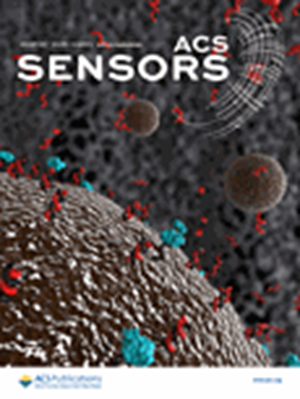Ligand Microenvironment-Regulated Nanozymes Enabled Machine Learning-Assisted Sensor Array for Simultaneous Identification of Phenolic Pollutants.
IF 8.2
1区 化学
Q1 CHEMISTRY, ANALYTICAL
引用次数: 0
Abstract
Phenolic pollutants pose a great threat to human health due to high toxicity, whereas existing methods are difficult to achieve the rapid recognition of multiple phenolic pollutants. In this study, we developed a novel machine learning-assisted sensor array based on ligand microenvironment-regulated Pt nanozymes for the simultaneous differentiation of five phenolic pollutants (phenol, 2,4-DCP, p-chlorophenol, o-chlorophenol, and m-chlorophenol), wherein four cellulose ligands (carboxymethylcellulose, CMC; methylcellulose, MC; hydroxyethyl cellulose, HC; and hydroxypropyl methyl cellulose, HPMC)-regulated Pt nanozymes (Pt@CMC, Pt@MC, Pt@HC, and Pt@HPMC) with considerable laccase-mimicking activity were designed, and the Pt@CMC nanozyme exhibited the highest catalytic activity, which was about 7.5-folds than that of natural laccase. The calculation of density functional theory revealed that Pt@CMC had a stronger ability for capturing 2,4-DCP molecules, showing higher laccase-like activity. More importantly, the different cellulose ligands endowed four Pt nanozymes with laccase-like activity diverse recognition capability to phenolic compounds; thus, a nanozyme sensor array was developed for the differentiation of five phenolic pollutants. Moreover, the integration of a machine learning algorithm and the nanozyme sensor array successfully achieved accurate identification and prediction of the five phenolic pollutants in real water samples. Therefore, this study provided an emerging sensing strategy for the simultaneous identification of phenolic pollutants, carving a promising path for the application of sensor arrays and machine learning algorithms in environmental monitoring.配体微环境调节纳米酶使机器学习辅助传感器阵列同时识别酚类污染物。
酚类污染物因其高毒性对人体健康构成极大威胁,而现有方法难以实现对多种酚类污染物的快速识别。在这项研究中,我们开发了一种基于配体微环境调节Pt纳米酶的新型机器学习辅助传感器阵列,用于同时区分五种酚类污染物(苯酚,2,4- dcp,对氯酚,邻氯酚和间氯酚),其中四种纤维素配体(羧甲基纤维素,CMC;甲基纤维素、MC;羟乙基纤维素;和羟丙基甲基纤维素(HPMC)调控的Pt纳米酶(Pt@CMC, Pt@MC, Pt@HC和Pt@HPMC)具有相当的模拟漆酶活性,其中Pt@CMC纳米酶的催化活性最高,约为天然漆酶的7.5倍。密度泛函理论计算表明Pt@CMC具有较强的捕获2,4- dcp分子的能力,具有较高的类漆酶活性。更重要的是,不同的纤维素配体赋予了四种具有漆酶样活性的Pt纳米酶对酚类化合物的不同识别能力;因此,开发了一种纳米酶传感器阵列,用于区分五种酚类污染物。此外,机器学习算法和纳米酶传感器阵列的集成成功地实现了对实际水样中五种酚类污染物的准确识别和预测。因此,本研究为同时识别酚类污染物提供了一种新兴的传感策略,为传感器阵列和机器学习算法在环境监测中的应用开辟了一条有前途的道路。
本文章由计算机程序翻译,如有差异,请以英文原文为准。
求助全文
约1分钟内获得全文
求助全文
来源期刊

ACS Sensors
Chemical Engineering-Bioengineering
CiteScore
14.50
自引率
3.40%
发文量
372
期刊介绍:
ACS Sensors is a peer-reviewed research journal that focuses on the dissemination of new and original knowledge in the field of sensor science, particularly those that selectively sense chemical or biological species or processes. The journal covers a broad range of topics, including but not limited to biosensors, chemical sensors, gas sensors, intracellular sensors, single molecule sensors, cell chips, and microfluidic devices. It aims to publish articles that address conceptual advances in sensing technology applicable to various types of analytes or application papers that report on the use of existing sensing concepts in new ways or for new analytes.
 求助内容:
求助内容: 应助结果提醒方式:
应助结果提醒方式:


